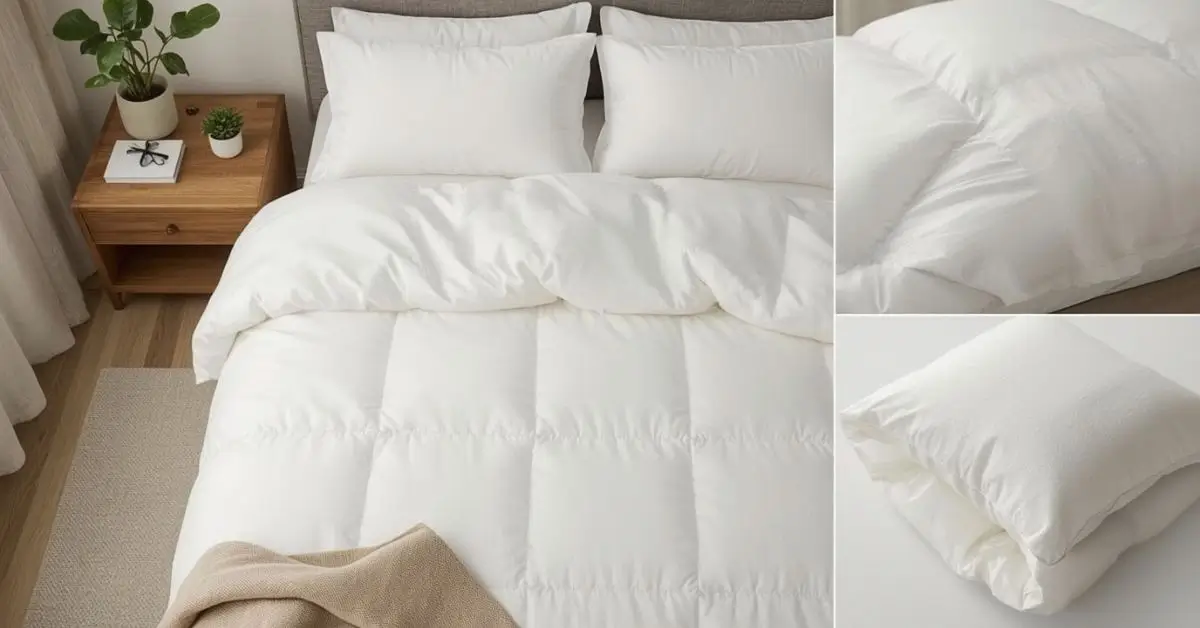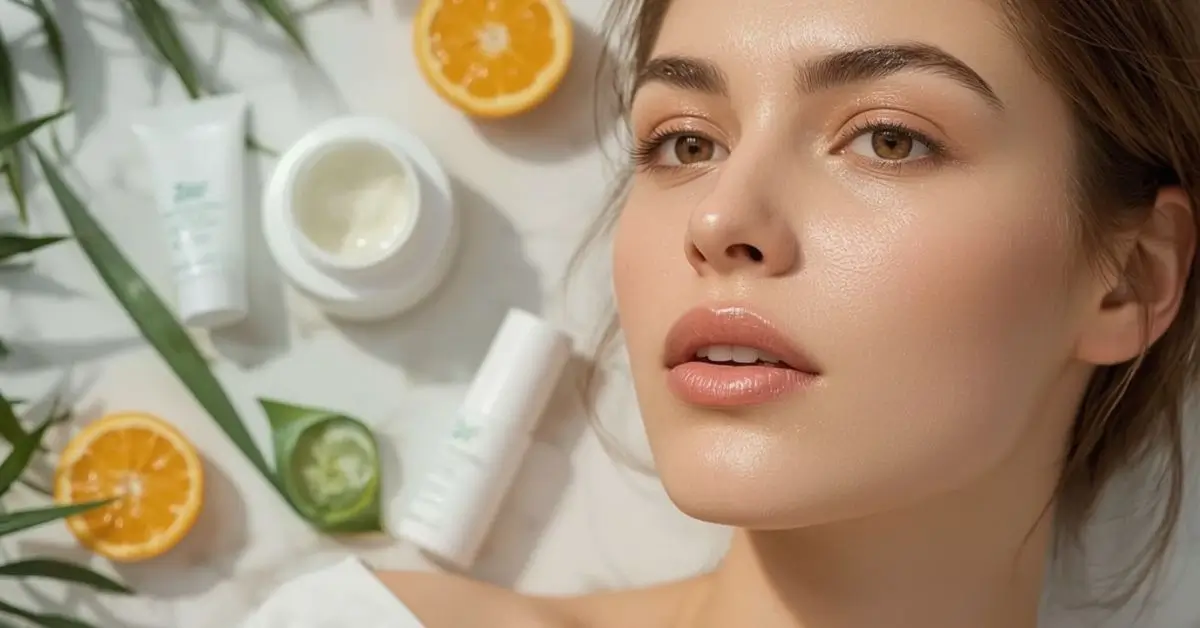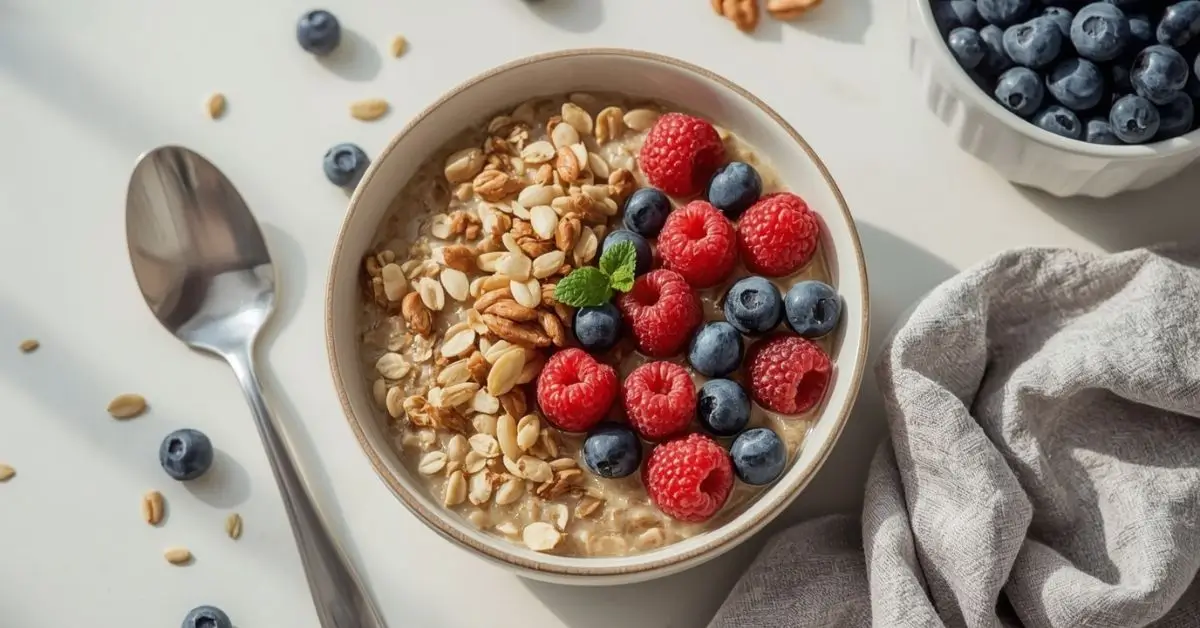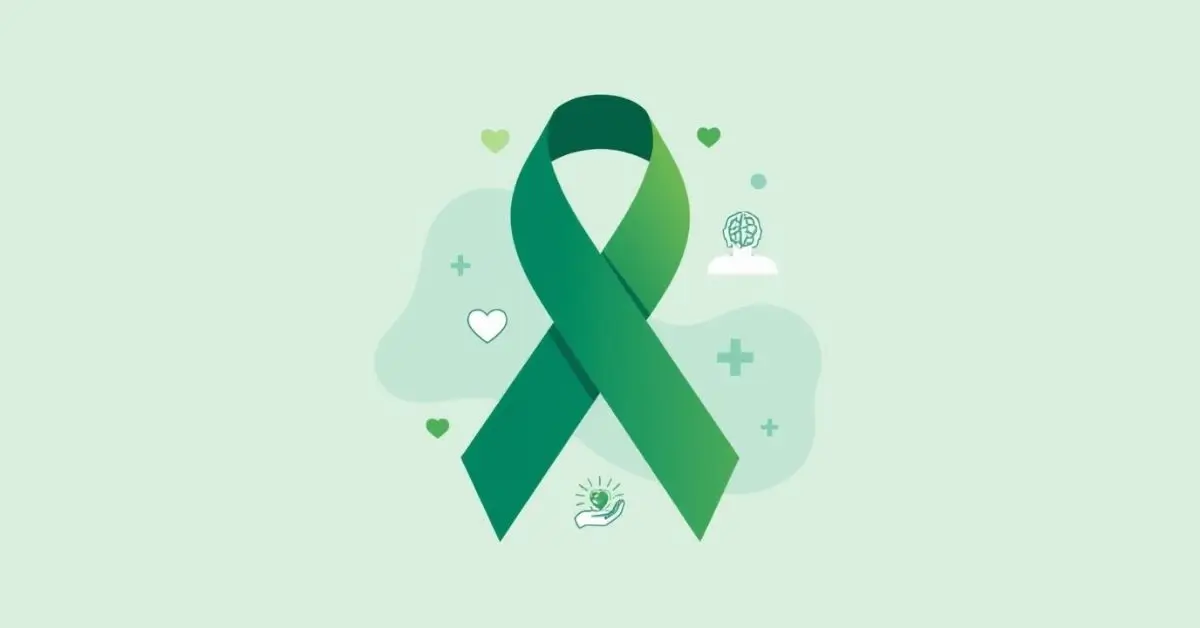Health
What Is a Duvet? A Simple Guide to Better Sleep

If you’ve ever shopped for bedding and found yourself confused between comforters, quilts, blankets, and duvets—you’re not alone. Many homeowners, renters, college students, interior design lovers, and even Airbnb hosts often ask the same question: what is a duvet?
This guide breaks down the essentials in simple terms. You’ll learn what makes a duvet unique, how it differs from other bedding, why duvet covers matter, and which type is best for your lifestyle. Whether you’re furnishing your first apartment, upgrading your family’s bedroom essentials, or outfitting a hotel room, you’ll find everything you need here.
What Is a Duvet?
A duvet is a type of bedding traditionally filled with down, feathers, wool, or synthetic alternatives. It’s designed to be used with a duvet cover, which acts like a pillowcase for your comfort layer. Unlike a comforter that often has stitched designs and is used without a cover, a duvet is typically plain and requires a cover for both protection and style.
- Key feature: Soft, flat bag filled with natural or synthetic material.
- Primary use: Provides warmth and comfort without needing extra blankets.
- Best for: Easy style changes and simplified laundry routines.
Duvet vs. Other Bedding Options
Understanding the difference between a duvet and other bedding types is essential before you shop.
Comforter vs Duvet
- Comforter: Pre-sewn with outer fabric and fill, usually used without a cover.
- Duvet: Requires a cover, easier to wash and swap for seasonal styles.
Quilt vs Duvet
- Quilt: Multi-layered with stitched patterns, more decorative and lighter.
- Duvet: Simpler design, warmer, and customizable with covers.
Blanket vs Duvet
- Blanket: Single-layer fabric, offers moderate warmth.
- Duvet: Multi-layered with fill, designed for full comfort.
| Bedding Type | Structure | Warmth Level | Style Flexibility | Maintenance |
|---|---|---|---|---|
| Duvet | Insert + cover | Medium–High | Very flexible | Easy (wash cover) |
| Comforter | Stitched, standalone | Medium | Limited | Entire piece must be washed |
| Quilt | Stitched layers | Light–Medium | Decorative | Easy |
| Blanket | Single fabric | Light | Minimal | Easy |
What Is a Duvet Cover and Do I Need One?
A duvet cover is a removable fabric case that slips over your duvet insert. Think of it as a giant pillowcase.
Benefits of a duvet cover:
- Protects the duvet from dirt and spills.
- Easy to wash compared to the bulky insert.
- Lets you switch colors, textures, or patterns to match your room design.
Tip: If you’re a student or a busy parent, a duvet cover saves you time and laundry costs.
What Materials Are Duvets Made From?
Duvets come in different fillings, each with unique benefits:
- Down duvet: Made from duck or goose feathers, lightweight yet warm.
- Synthetic fill duvet: Hypoallergenic, more affordable, easy to wash.
- Wool duvet: Breathable, great for regulating body temperature.
- Cotton duvet: Natural, soft, and suitable for hot sleepers.
Choosing the right fill depends on your budget, allergies, and climate.
Are Duvets Warmer Than Comforters?
Generally, yes. Because a duvet can be filled with down or high-quality synthetics, it often provides more warmth. However, comforters are usually quilted, which distributes warmth evenly but may not be as customizable.
- Best duvet for hot sleepers: Choose lightweight cotton or synthetic fill with cooling technology.
- Best duvet for cold climates: Opt for down or wool for maximum insulation.
Do Hotels Use Duvets or Comforters?
Most hotels and Airbnb hosts prefer duvets for three reasons:
- Easy maintenance – only the cover needs frequent washing.
- Fresh look – crisp white covers give a clean, luxurious appearance.
- Comfort – soft, fluffy inserts provide a cozy guest experience.
If you’re managing a rental, a duvet setup will help you impress guests while cutting laundry time.
How to Use a Duvet Properly
- Choose the right insert (down or synthetic).
- Select a duvet cover that matches your décor.
- Insert the duvet inside the cover (use corner ties if available).
- Shake it out for even distribution.
- Layer with sheets, pillows, or throws for style and comfort.
How to Wash and Care for a Duvet
- Duvet insert: Wash 1–2 times a year or dry clean if down-filled.
- Duvet cover: Wash weekly or bi-weekly like regular bedding.
- Storage tip: Store in a breathable cotton bag, not plastic, to prevent moisture buildup.
Expert Insights on Duvets
To provide trusted guidance, here are expert-backed references:
- The Sleep Foundation notes that duvets offer customizable warmth with covers that simplify maintenance.
- Good Housekeeping Institute highlights that duvet covers extend the lifespan of bedding inserts.
- Mayo Clinic recommends hypoallergenic duvet options for individuals with allergies.
These insights confirm that duvets are not just about comfort—they’re also practical and health-friendly.
FAQ’s
Difference between a duvet and a comforter?
A duvet requires a cover and is more versatile, while a comforter is pre-sewn and used as is.
Is a duvet the same as a quilt or blanket?
No. Quilts and blankets are lighter and decorative, while duvets provide fuller warmth.
What materials are duvets made from?
Common fillings include down, feathers, wool, cotton, or synthetic fibers like polyester.
Best duvet for hot sleepers?
Look for lightweight, breathable cotton or synthetic duvets designed with cooling technology.
How to wash and care for a duvet?
Wash the cover regularly, clean the insert occasionally, and store it in breathable fabric bags.
Conclusion
So, what is a duvet? It’s more than just bedding—it’s a versatile, cozy, and practical solution for every household. From college dorms to luxury hotels, duvets make sleep comfortable while keeping cleaning simple. By choosing the right insert and cover, you can transform your bedroom into a stylish retreat without extra hassle.
Health
Brighten Best: Top Tips for Glowing Skin

When it comes to achieving a naturally luminous complexion, knowing how to brighten best is essential. Everyone wants skin that glows, looks even, and feels healthy, but with countless products, routines, and tips available online, figuring out what actually works can feel overwhelming. In this guide, we’ll break down everything you need to know about brightening your skin safely and effectively in 2025.
Why Skin Brightening Matters
Uneven skin tone, dark spots, and dullness are common concerns caused by sun exposure, aging, stress, and lifestyle factors. Brightening your skin doesn’t mean changing your natural color—it’s about enhancing radiance, balancing pigmentation, and improving overall texture.
A user recently shared: “I tried so many products, but my skin only looked healthy when I followed a proper routine with natural brightening ingredients. The results were incredible!”
Brighten Skin Naturally: Safe and Effective Approaches
Many people prefer natural methods over chemical-heavy products. Here’s how to brighten skin naturally without compromising skin health:
- Vitamin C Treatments: Vitamin C is a powerhouse antioxidant that helps reduce pigmentation and enhances collagen production. Applying a serum daily can visibly brighten the complexion over time.
- Aloe Vera: This soothing plant reduces redness, promotes healing, and helps even skin tone. Use fresh aloe gel on your face twice daily for the best effect.
- Honey and Lemon Masks: Honey nourishes while lemon gently lightens dark spots. A weekly mask can gradually improve radiance.
- Hydration: Drinking enough water keeps your skin plump and reduces dullness. Hydrated skin naturally reflects light better.
Best Skin Brightening Products in 2025
For those seeking quick and reliable results, best skin brightening products combine scientifically proven ingredients with safe formulations. Some top picks include:
- Brightening Creams and Serums: Look for products with niacinamide, licorice extract, or alpha arbutin. These ingredients target hyperpigmentation without irritation.
- Face Brightening Treatments: Chemical peels, microdermabrasion, or LED therapies performed by professionals can boost glow and improve skin tone.
- Top-Rated Brightening Skincare Lines: Brands offering layered routines—cleanser, toner, serum, moisturizer, and SPF—provide consistent results over time.
Brightening Creams and Serums: How to Choose
Not all brightening creams are created equal. To brighten dark spots and improve your complexion:
- Check Ingredients: Natural brightening ingredients like vitamin C, licorice root, and niacinamide are effective and safe.
- Consider Skin Type: Sensitive skin benefits from gentle formulations, while oily or acne-prone skin may prefer lightweight, non-comedogenic options.
- Sun Protection: Always pair brightening creams with SPF. Sun exposure can reverse the benefits.
Face Brightening Treatments: Professional Options
Sometimes, topical products aren’t enough. Face brightening treatments offered by dermatologists or licensed estheticians can enhance results:
- Chemical Peels: Exfoliate dead skin layers to reveal brighter skin beneath.
- Microdermabrasion: Non-invasive, mechanical exfoliation for smoother, glowing skin.
- Laser Therapy: Targets pigmentation and promotes collagen production.
Skin Tone Brightening Tips
Consistency is key when aiming to brighten complexion fast. Here are expert-recommended tips:
- Exfoliate 2–3 times per week to remove dead skin cells.
- Moisturize daily to maintain skin barrier health.
- Use antioxidants like vitamin E and ferulic acid to protect against environmental damage.
- Sleep 7–9 hours each night; cellular repair occurs during deep sleep.
Glowing Skin Remedies You Can Try at Home
If you prefer DIY solutions, glowing skin remedies can complement professional products:
- Oatmeal and Yogurt Masks: Soothes and nourishes while gently exfoliating.
- Green Tea Toners: Reduces inflammation and boosts radiance.
- Turmeric Paste: A natural anti-inflammatory that helps even out skin tone.
Natural Brightening Ingredients You Need
In 2025, consumers are increasingly conscious of ingredients. Look for these natural brightening ingredients in your skincare:
- Licorice Root Extract: Reduces pigmentation and brightens skin tone.
- Niacinamide (Vitamin B3): Enhances skin barrier and reduces dark spots.
- Vitamin C: Antioxidant properties lighten pigmentation and improve radiance.
- Alpha-Arbutin: Targets stubborn dark spots and hyperpigmentation safely.
How to Brighten Dark Spots Effectively
Dark spots can be persistent, but a combination of treatments and products works best:
- Apply targeted serums with vitamin C or alpha-arbutin.
- Use gentle exfoliants weekly to speed up cell turnover.
- Always protect your skin with SPF during the day to prevent new pigmentation.
Brighten Complexion Fast: Daily Routine
A simple routine to brighten complexion fast includes:
- Cleanser: Remove impurities and makeup.
- Toner: Restore pH balance and prepare for active ingredients.
- Serum: Apply brightening serum with vitamin C or niacinamide.
- Moisturizer: Lock in hydration.
- Sunscreen: Prevent UV damage and pigmentation.
Consistency over weeks delivers the best results.
Top-Rated Brightening Skincare Products
Here’s a curated list of top-rated brightening skincare available in 2025:
- Vitamin C serums with stable formulations.
- Niacinamide-based moisturizers for even skin tone.
- Licorice root extract creams for dark spots.
- Alpha-arbutin serums for stubborn pigmentation.
FAQ’s
A: Use a combination of natural brightening ingredients like vitamin C, aloe vera, and honey, along with proper hydration and sun protection.
A: Serums or creams containing alpha-arbutin, niacinamide, or licorice extract are effective for targeting dark spots safely.
A: Visible results typically appear in 4–6 weeks with consistent use of brightening products and daily SPF.
A: Yes, options include chemical peels, microdermabrasion, and laser therapy performed by licensed professionals.
Final Thoughts
Achieving a radiant, glowing complexion is possible by knowing how to brighten best through a combination of natural methods, effective products, and professional treatments. Prioritize ingredients you trust, stay consistent with your routine, and protect your skin from sun damage.
Health
What Is Oat Bran? A Guide for Health-Conscious Adults

If you’ve ever wondered “what is oat bran?”, you’re not alone. For health-conscious adults, people managing cholesterol, fitness enthusiasts, and diabetics, oat bran is a nutritional powerhouse worth understanding. Unlike regular oatmeal, oat bran offers concentrated fiber, essential nutrients, and heart-healthy compounds that can improve digestion, manage blood sugar, and support weight management.
In this guide, we’ll explore oat bran nutrition facts, its health benefits, how it compares to oatmeal, and practical ways to include it in your diet.
What Is Oat Bran?
Oat bran is the outer layer of the oat grain, rich in soluble fiber, vitamins, and minerals. It’s often separated during milling to produce refined oats but retains much of the grain’s health-boosting properties.
Key Characteristics:
- High in beta-glucan, a soluble fiber linked to cholesterol reduction.
- Contains B vitamins, magnesium, and antioxidants.
- Can be consumed as porridge, added to smoothies, or baked into recipes.
Oat Bran vs Oatmeal: What’s the Difference?
| Feature | Oat Bran | Oatmeal |
|---|---|---|
| Part of the Grain | Outer layer | Whole oat groat or rolled oats |
| Fiber Content | Higher | Moderate |
| Cooking Time | 2–5 minutes | 5–10 minutes (rolled oats) |
| Health Focus | Cholesterol & heart health | General nutrition & energy |
| Common Use | Porridge, smoothies, baking | Breakfast cereal, snacks |
Tip: If your goal is high fiber and heart health, oat bran is often the better choice.
Health Benefits of Oat Bran
Supports Heart Health
Oat bran contains beta-glucan, a soluble fiber that binds to cholesterol in the digestive tract, helping to reduce LDL (“bad”) cholesterol. Studies show 3 grams of beta-glucan daily can significantly improve heart health (Harvard T.H. Chan School of Public Health, 2022).
Aids Digestion
Its high fiber content promotes regular bowel movements and supports a healthy gut microbiome.
Helps Manage Blood Sugar
Soluble fiber slows the absorption of glucose, making oat bran beneficial for diabetics and pre-diabetics.
Supports Weight Management
Oat bran expands in the stomach, increasing satiety and reducing overall calorie intake.
Oat Bran Nutrition Facts
| Nutrient | Amount per 1/2 cup (40g) |
|---|---|
| Calories | 80 |
| Total Fat | 1.5 g |
| Carbohydrates | 27 g |
| Fiber | 6 g (mostly soluble) |
| Protein | 5 g |
| Magnesium | 60 mg |
| Iron | 2 mg |
| Beta-glucan | 3 g |
How to Eat Oat Bran
Quick Ideas:
- Porridge: Cook with milk or water for 2–3 minutes, top with fruit.
- Smoothies: Add 2 tablespoons to your morning smoothie for fiber boost.
- Baking: Incorporate into muffins, breads, and cookies.
- Cereal Mix: Combine with other grains for a nutrient-dense breakfast.
Tip for Diabetics: Pair oat bran with protein (e.g., yogurt or nuts) to further stabilize blood sugar.
Oat Bran Recipes
- Classic Oat Bran Porridge: Cook ½ cup oat bran in 1 cup milk/water; top with berries, chia seeds, and honey.
- Oat Bran Pancakes: Substitute ¼ cup oat bran for flour in pancake recipes for added fiber.
- Oat Bran Muffins: Blend with whole wheat flour, bananas, and cinnamon for heart-healthy snacks.
FAQ’s
What is oat bran and how is it different from oatmeal?
Oat bran is the outer layer of oats, richer in fiber and beta-glucan, while oatmeal is made from the whole oat grain or rolled oats.
What are the health benefits of oat bran?
It lowers cholesterol, supports digestion, helps manage blood sugar, and may aid in weight loss.
Is oat bran good for lowering cholesterol?
Yes, the beta-glucan soluble fiber in oat bran binds to cholesterol and helps remove it from the body.
How much fiber is in oat bran?
A ½ cup (40g) serving contains about 6 grams of fiber, mostly soluble.
How do you cook oat bran for breakfast?
Cook with milk or water for 2–3 minutes, stir, and top with fruit, nuts, or seeds.
Can oat bran help with weight loss?
Yes, it increases satiety, which can reduce overall calorie intake.
Is oat bran safe for diabetics?
Absolutely—its soluble fiber slows glucose absorption, helping regulate blood sugar.
Best ways to include oat bran in your diet?
Porridge, smoothies, muffins, breads, or as a cereal topping.
Conclusion
Understanding what is oat bran and how to use it can transform your diet. From heart health to blood sugar management and weight control, oat bran is a simple, versatile, and nutrient-dense addition to meals. Whether you’re a home cook, fitness enthusiast, or health-conscious individual, incorporating oat bran into your daily routine can yield meaningful health benefits.
Health
The Meaning Behind the Mental Health Awareness Color

Colors carry powerful meaning. For mental health advocates, nonprofits, educators, healthcare professionals, event organizers, and the general public, knowing the mental health awareness color helps spark conversations, unify campaigns, and show visible support.
Just like pink symbolizes breast cancer awareness, the green awareness ribbon has become the global emblem for mental health. But why green? And how can individuals and organizations use it effectively? This guide explores its history, symbolism, and application—so you can confidently integrate it into events, education, and advocacy.
What Is the Mental Health Awareness Color?
The official mental health awareness color is green. It represents:
- Hope and renewal → reminding us of growth and recovery.
- Balance and calm → reflecting emotional stability.
- Support and unity → showing solidarity with individuals affected by mental illness.
What color ribbon represents mental health?
The green ribbon mental health symbol is universally recognized. Wearing it on clothing, accessories, or mental health awareness bracelet colors shows support and sparks meaningful conversations.
Why Is Green the Color for Mental Health Awareness?
The history of green as the chosen color dates back to the 19th century, when green was linked with freedom from oppression and healing. Over time, it became associated with balance, renewal, and growth in psychological contexts.
- In psychology of color in mental health, green is believed to calm anxiety and reduce stress.
- It also bridges the gap between nature and human emotions, reinforcing connection and healing.
(Source: American Psychological Association, “The Power of Color in Mental Health,” 2023)
Mental Health Awareness Month Color Guide
Every May, organizations highlight Mental Health Awareness Month. Using consistent colors and symbols ensures stronger visibility.
| Symbol / Color | Meaning & Usage |
|---|---|
| Green Awareness Ribbon | Core symbol for all mental health awareness |
| Lime Green (neon green) | Used in some campaigns for youth mental health |
| Multicolor bracelets or bands | Show support for multiple mental health causes |
| Complementary colors (blue, yellow) | Sometimes used for specific conditions like anxiety or bipolar awareness |
Symbolic Colors for Mental Health Support
While green is the official mental health awareness color, other colors are sometimes used to represent specific conditions:
- Teal → anxiety awareness
- Yellow → suicide prevention
- Blue → depression support
- Purple → eating disorders awareness
This sometimes causes confusion. For example, people often ask:
- “What colors support anxiety and depression awareness?” → Teal and blue.
- “What is the difference between mental health awareness color and suicide prevention color?” → Green represents mental health generally, while yellow specifically symbolizes suicide prevention.
How to Use the Mental Health Awareness Color in Campaigns
Event organizers, HR teams, and advocates can integrate green in practical ways:
- Events & Walks → Distribute green ribbons, shirts, or wristbands.
- Schools & Colleges → Encourage students to wear green during awareness weeks.
- Workplace Campaigns → Add green banners, posters, or desk accessories.
- Online Campaigns → Use green in graphics, logos, and social media branding.
Tip: Pair the mental health campaign colors with powerful stories and educational resources for maximum impact.
Colors Representing Emotional Well-Being
Colors can influence mood and emotional responses. According to research on the psychology of color in mental health (Source: Verywell Mind, 2024):
- Green → promotes calm, renewal, hope.
- Blue → reduces stress and fosters peace.
- Yellow → evokes optimism but must be used carefully (too bright can trigger anxiety).
- Purple → inspires creativity and reflection.
This is why green works so well as the mental health awareness color—it represents healing and balance across cultures.
FAQ’s
What is the mental health awareness color?
Green is the official color, symbolized by the green awareness ribbon.
Why is green the color for mental health awareness?
Green represents growth, renewal, and calm, aligning with recovery and emotional balance.
What color ribbon represents mental health?
The green ribbon mental health symbol is globally recognized.
What colors support anxiety and depression awareness?
Teal supports anxiety awareness, while blue represents depression awareness.
Difference between mental health awareness color and suicide prevention color?
Green = mental health awareness in general. Yellow = suicide prevention specifically.
How to use the mental health awareness color in campaigns?
Use green in clothing, bracelets, posters, or online branding during awareness events.
Conclusion
The mental health awareness color is more than just a shade—it’s a symbol of hope, support, and healing. From nonprofits to educators, healthcare professionals, event organizers, and the general public, using green helps amplify awareness campaigns and reduce stigma.
By incorporating green awareness ribbon symbols, mental health support colors, and thoughtful design choices, you can foster more meaningful conversations and contribute to a healthier, more compassionate community.
-

 BLOG4 months ago
BLOG4 months agoBerniece Julien: The Quiet Power Behind the Spotlight
-

 BLOG5 months ago
BLOG5 months agoCineby App (2025): Features, Download & Fixes Guide
-

 ENTERTAINMENT5 months ago
ENTERTAINMENT5 months agoErome Uncovered: A Closer Look at the NSFW Content Platform
-

 ENTERTAINMENT5 months ago
ENTERTAINMENT5 months agoScoutedToday: Discovering Tomorrow’s Talent Today
-

 EDUCATION5 months ago
EDUCATION5 months ago42°C to °F – Real Impact of Extreme Heat
-

 TECH5 months ago
TECH5 months agoHow to Fix ‘Fatal glibc error: CPU Does Not Support x86‑64‑v2’ on Legacy Hardware
-

 TECH5 months ago
TECH5 months agoCaricatronchi: Redefining Digital Caricature
-

 ENTERTAINMENT5 months ago
ENTERTAINMENT5 months agoMangaFire Explored: Your Gateway to Free Manga Reading
